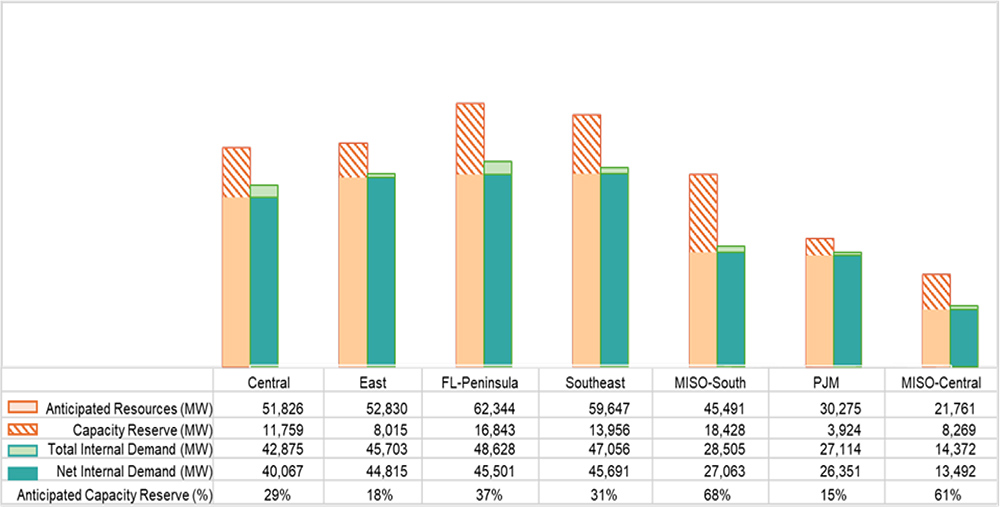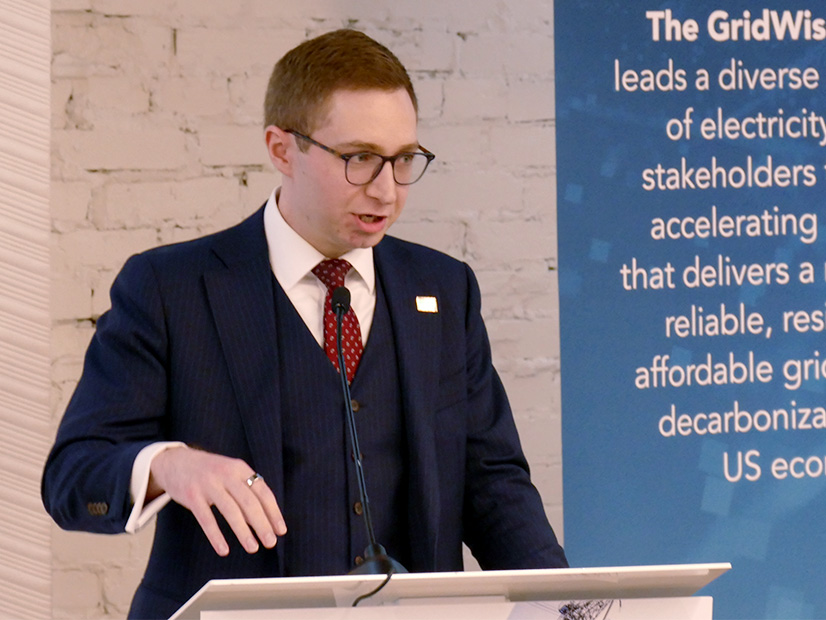MISO and its Independent Market Monitor tracked a rise in energy consumption in fall 2025 and reviewed operational rough patches, while the RTO explained why its machine-learning risk predictor remains a work in progress.
The updates were part of an annual fall review to the MISO Board of Directors at a Dec. 9 Markets Committee meeting.
Executive Director of System Operations J.T. Smith said average load was a couple of gigawatts higher than in other recent autumns. As a result, Smith said congestion and uplift payments trended higher.
Smith told the board that he and MISO leadership would scrutinize whether the usage increase is poised to become a long-term trend.
The MISO system averaged 73 GW over the fall. It peaked Sept. 16 at 106 GW, short of MISO’s 110-GW prediction.
MISO’s average daily generation outages veered higher, at 52 GW, 7 to 8 GW higher than in 2023 and 2024.
Smith said MISO has found that its peers have experienced a similar uptick in generator unavailability after reaching out to them. “This isn’t just a MISO phenomenon.”
Monitor Carrie Milton said MISO recorded a 2% increase in average load compared to the previous autumn. She said MISO’s average $39.29/MWh real-time price over the season was 44% higher when compared to 2024 because of gas prices that crept beyond $3/MMBtu.
During a public comment period before the meeting concluded, Minnesota Public Utilities Commissioner Joe Sullivan said he believed MISO leadership and board members didn’t focus enough on the 44% rise in energy prices. Sullivan urged them to spend more time discussing affordability and resource diversity to combat the hefty influence of natural gas on MISO wholesale prices.
Milton drew attention to MISO’s ramping challenges as its solar fleet now is capable of 14.5-GW peaks.
Milton said MISO’s more dramatic ramping needs in the evening have increased the frequency of operating reserve shortages, which doubled from fall 2024 to fall 2025 and occur mostly from 5-7 p.m. ET. She said MISO renewable forecasting appears to miss when solar and wind generation drop off for the evening. Milton reported that MISO experienced operating reserve shortages on seven days, including one 40-minute event Sept. 25 where prices averaged $3,150/MWh.
Milton said MISO should establish a floor on its short-term reserve requirement so there is enough short-term supply to go around should MISO’s largest contingency occur.
Milton also praised “MISO operators’ swift actions” on Sept. 16, when the RTO was forced to declare a local transmission emergency after a 500-kV line unexpectedly went offline for two hours in southeastern Louisiana. (See IMM Advises Better Constraint Management After MISO Tx Emergency.)
“This is the third transmission emergency in the South since May,” Milton said.
MISO scrounged up 700 MW to serve load and avoid blackouts during the emergency. It sent some resources into their emergency ranges and manually redispatched a large nuclear unit, two steam units and a solar facility, racking up nearly $800,000 in day-ahead market assurance payments, Milton said.
Finally, the IMM said it has noticed that some transmission owners in MISO Midwest are slow to switch from summer line ratings to their more relaxed winter ratings in fall. Milton said one MISO Midwest transmission owner’s constraint amassed $63 million in congestion from Oct. 1 until the TO moved to winter ratings on Dec. 1.
“Switching to a winter rating earlier — or adjusting for temperature — would have virtually eliminated this congestion,” Milton said.
Risk Predictor not Quite There Yet
MISO’s risk prediction machine learning model failed to predict MISO’s six highest risk days over the fall, Smith reported.
“In fall, we were zero for six,” he said wryly. Smith said the risk prediction model is more accurate in the winter, when weather correlates more closely with system risk.
Smith said the model struggles, for instance, to understand why MISO would experience high thermal outages or low wind output “in the fall, when you have a 70-degree day under blue skies.” He also said the model’s prediction capability for transmission system congestion is not yet accurate.
Smith hypothesized the model would improve as it receives more data inputs on MISO’s off seasons and has a chance to mature.
“We’re very early in this usage. It’s telling us that there’s still a lot of work to be done,” Smith said.
“It certainly jumps off the page that there were six high-risk days, and none of them were correct,” MISO director Barbara Krumsiek said, adding jokingly that the topic could be brought up later in the day at the Human Resources Committee of the MISO Board.
Director Theresa Wise asked staff to explain its “enthusiasm” behind being “zero for six,” drawing laughs from stakeholders.
Smith said the model is “adding value in situational awareness” as it evolves and is helping MISO better anticipate its risk profile in the day-ahead, even though it failed to name the highest-risk days over the fall. He said MISO “recognizes that the model is still in its infancy.”
“It’s giving us a one-hour peak prediction on a day-to-day basis,” Smith said.
MISO has been using the risk prediction model for about a year.
Smith closed by telling board members MISO is prepared for a winter that likely will contain above-average temperatures in MISO South, while normal temperatures prevail in the Midwest alongside active precipitation in the Great Lakes region.





